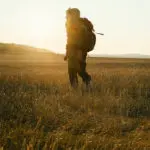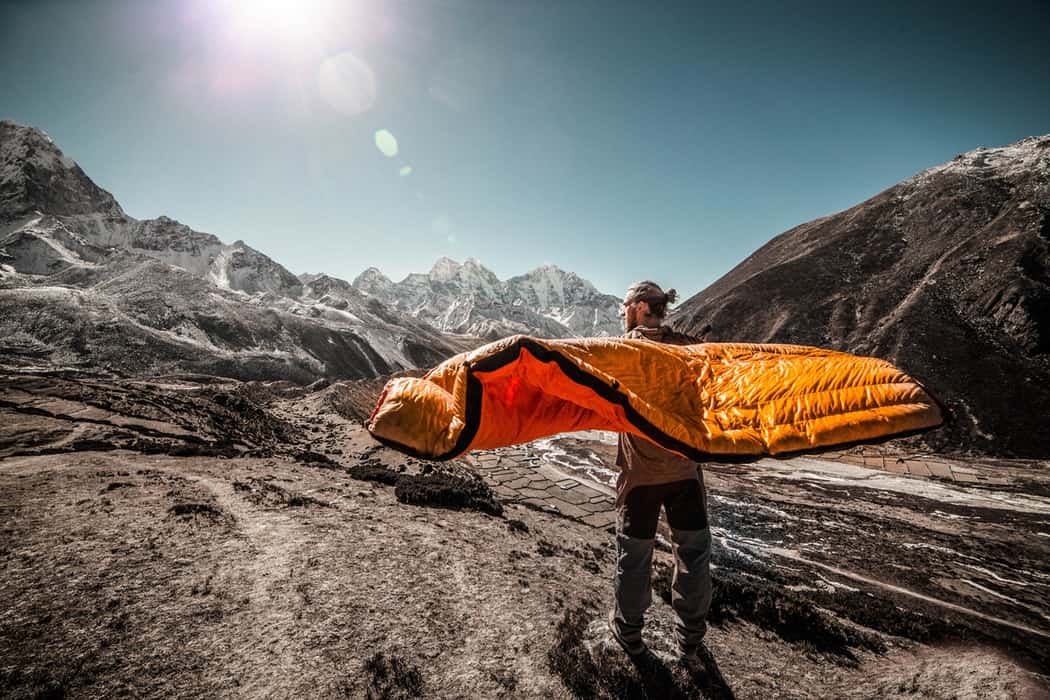On multi-day hiking trips, a portable shelter comes in very handy because it allows you to set up camp almost anywhere and whenever you like instead of having to reach safe places like mountain huts. While tents are definitely more comfortable, if you’re hiking alone, you might find a tent too heavy and voluminous to carry – especially if you’re on the trails for less than three days.
A bivy sack is an excellent alternative choice to a tent on such trips since it is lighter while offering similar weather protection. A high-end bivy sack is twice as light on average and 30 percent smaller than a high-quality two-person tent (packed size). Not only does it take up significantly less space in your backpack if the weather is against you, but it can also be set up very quickly.
However, bivy bags are not suitable for longer hiking trips because they offer very limited comfort/space and often require the backpack to be left outside.
Here I’ve selected and reviewed the best bivy sacks for hiking, backpacking, and mountaineering. I’ve decided to only list products made of waterproof breathable materials as these provide the best versatility in various conditions and amazing extreme weather protection. I’ve mainly targeted lightweight and well-packable products.
1. Tennier Woodland Cover
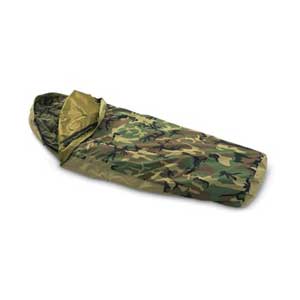
Tennier has been supplying integrated sleeping bags and bivy sacks to the US military for years. These bivy sleep systems combine a waterproof Gore-Tex outer bivy sack with two different weights of liner bags, giving you a more light option for your gear if you need it. In combination, the specs claim it can provide insulation down to-40deg.
It’s not very lightweight, but you know this gear has been tested. And while for a normal person, that may sound like a lot of extra weight, the protection that it offers will be good for camping even in the harshest of conditions.
The bag has an extra minimalist camo design so that it won’t attract stuff like animals or bugs, and in case of an emergency, it won’t be spotted easily. If you choose this bivy sack, you won’t regret it.
Pros
- The military does not only use these bags but they are also built to their high standards
- The bag has an extra minimalist camo design so that it won’t attract stuff like animals, bugs, or even people
- While for a normal person, that may sound like a lot of extra weight, the protection that it offers will be good for camping even in the harshest of conditions
Cons
- While it may look pretty minimalistic, the whole bag leaves a lot to be desired when it comes to design
2. Aqua Quest Mummy Bivy Bag
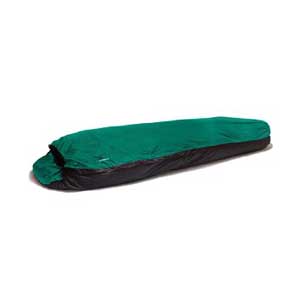
Aqua Quest is an industry leader in waterproof gear, so it’s no surprise that their Mummy bag is more waterproof than most others. It has a 70D RipStop fabric, Laminated PU coating, Heat taped seams, and all of that adds up to a waterproof rating of 10,000 mm & Breathability and ventilation rating of 3000 gr/m2/day. The ‘Mummy’ weighs in at only one point two lbs and packs incredibly small.
It’s extra wide for maximum comfort and long enough to comfortably fit anybody up to 6’6″ (2 m). It has zippers on both sides to fit left and right-zippered sleeping bags. You can use it by itself, or inside any other shelter, such as a tent, boat, under a tarp, in a cold building, etc.
Remove it from the included carrying sack, lay it down, put your sleeping bag inside, and you are ready for camping. It’s very minimalist, and it has an excellent amount of ventilation, plus a bug net. This piece of gear is an excellent addition to any bug-out camping equipment.
Pros
- It has a 70D RipStop fabric, Laminated PU coating, heat taped seams, and all of that adds up to a waterproof rating of 10,000 mm
- It has a Breathability and ventilation rating of 3000 gr/m2/day so that condensation won’t be a problem at all
- t has zippers on both sides to fit left and right-zippered sleeping bags, giving you a lot of ease of access not commonly found
Cons
- While on paper, all of the features add up to a pretty substantial waterproof rating, there have been many reports of it leaking a lot
- The same can be said about its breathability, because of the lack of many ventilation openings, you can be soaked underneath, while everything outside will be bone dry
3. Slumberjack Contour Bivy
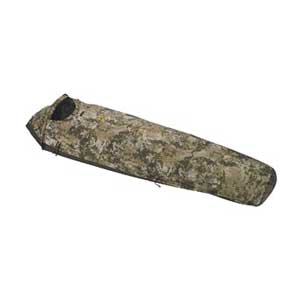
The Slumberjack Contour Bivy is ideal if you want to get deep into the high country for an overnight adventure and don’t want to carry a tent. The mesh window has an awning to allow for ventilation and visibility. The arm ports make it easy to sit up and cook or look at your map while staying protected from the elements.
The bottom comprises 70D Polyester Taffeta with a 2000mm coating to protect against ground moisture. This lightweight bivy combines waterproof and breathable upper fabric and a Kryptek Highlander camouflage to form an incredibly versatile sleeping shelter.
Its dual zippers with Velcro tabs allow for “Arms Out” functionality combined with the Hooded design to improve both comfort and ventilation. Adjustable visors can be flipped open to expose a bug-free mesh window for increased ventilation and a 40D upper fabric with fully taped seams that offer waterproofing and ventilation.
While it hasn’t got a lot of space in it, this bivy sack has excellent ventilation, it features great materials and excellent zipper technology. With all of this stuff, what are you waiting for? Go and grab one bivy sack that will change your camping experience.
Pros
- The mesh window has an awning that enables ventilation and visibility, which adds to it some much-needed air channeling not commonly found on other bivies
- The arm ports facilitate sitting and cooking or looking at your map while being protected from the elements, so it is even more flexible
- Its dual zippers with Velcro tabs allow for “Arms Out” functionality combined with the Hooded design to improve both comfort and ventilation
Cons
- One huge caveat is the lack of any space inside, and if you are on the taller or broad-shouldered side, you are going to have some huge problems
4. ACU Digital Bivy Cover
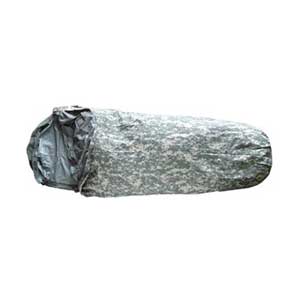
This bivy sack is one of the best models ACU offers, with its large space, low weight, and high-quality materials, and its good reviews aren’t for nothing. On the exterior, the bivy sack has a 100% water/windproof outer layer that is designed to give a fully modular sleeping system while still giving you a sufficient level of ventilation. Oh, and the bivy sack is also nonflammable and machine washable.
The 2-way ripstop nylon zipper of the bivy sack allows for additional top or bottom ventilation (the zippers are non-locking sliders that repairs if jammed or snagged). Suffice it to say, with its large amount of space for a nice sleeping pad, low weight, and a good number of features, this is an excellent middle-of-the-road bivy sack.
Pros
- Considering its vast space, low weight, and high-quality materials, this may be only one of the best models that ACU makes right now
- The 2-way ripstop nylon zipper of the bivy sack allows for additional top or bottom ventilation, and they are non-locking sliders that repair if jammed or snagged
- Oh, and the bivy sack is also nonflammable and machine washable, so no matter what happens, you can be sure you will be protected from the elements
Cons
- There have been a lot of reports regarding quality checks and assurance, like ripped seams and non-matching colors to the order
- It suffers from false advertisement because on the spec sheet it says that it is made out of gore-tex, but this is not even in the slightest
5. Outdoor Research Alpine
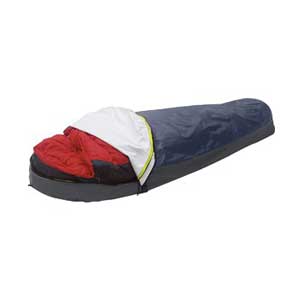
The Outdoor Research Alpine Bivy is tough, durable, completely waterproof, be it snow and rain, and probably durable, but don’t quote me on that one! The Outdoor Research Alpine Bivy is a beaut of a sack for those who want year-round, reliable, all-weather protection. While its protection and weight might be overkill for a summer night in a moderate climate, in extreme weather conditions, you can’t do much better.
There are, however, a few downsides. Firstly, it’s very pricey. Secondly, the pack size and heavyweight are around double that of some competitors, and finally, it’s a little bit on the short side for very tall users (84″) and a little narrow at the shoulders (26″) for broader backed bivies.
To sum it up, while the bag has some amazing features like a 3-layer Gore-Tex “respiration positive” fabric, a durable and weather-resistant fabric that breathes well, plus a bug net and a storm flap with an internal pocket, the bivy sack also has some cons, like it’s immense weight and price and small size. While it isn’t for everyone, this bivy sack is the bivy-est of them all.
Pros
- The bag has some fantastic features like a 3-layer Gore-Tex “respiration positive” fabric and a piece of durable and weather-resistant fabric that breathes well
- A bug net and a storm flap with an internal pocket give you even more breathability and access to the already great gore-tex shell
- While the bag may not be for everyone, for people who are into hardcore hiking and extreme weather conditions, this is one of the best choices
Cons
- If you are going on just a short summer camping, this bivy is a little bit too heavy and protected, so it is only suitable for winter hiking or extremely cold situations
- The lack of flexibility when it comes to the season is combined with a very high price, which doesn’t combine well with its only decent quality materials
6. SOL Survive Outdoors Longer SOL 70%
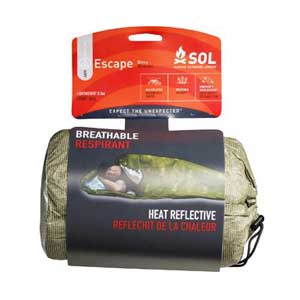
This is a bare-bones bivy sack with no extra features at a reasonable price, so it’s a person a budget’s dream. It falls more into the shelter of emergency than the bivy sack of adventure. So, it’s best to save a pinch of your life.
With its water-resistant, durable fabric, it will keep you warm and dry because it will reflect 70% of radiated body heat and resist punctures and tears. But that’s not all-it also has a full side zipper system, a draw-cord hood closure, and a foot box for comfort.
To sum it up, this is the cheapest and, thus, the best option when you are building a survival bag.
Pros
- This is a bare-bones bivy sack with no extra features at a reasonable price, so it’s a person a budget’s dream
- With its water-resistant, durable fabric, it will keep you warm and dry because it will reflect 70% of radiated body heat
- Its outer shell is durable enough to resist any sort of punctures and tears, so you will be safely sleeping knowing how durable it is
Cons
- While its low price may sound like a good thing at first, when you have it in your hands, you will start noticing where the corners were cut
7. Tact Bivvy 2.0
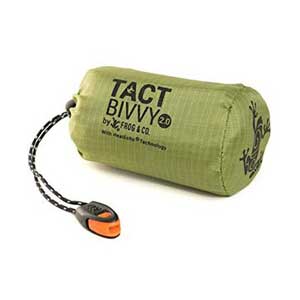
When it comes to heavy-duty bivy sacks, the gear that Survival Frog offers is truly one of the best, and this is represented by their most infamous model, the Tact Bivvy.
This ultra-light bivy sack is just the essential in a package of 4.8-ounce. It packs up into a small sack of stuff that will not fill your pack. The reflective lining directs heat from your body back into your sleeping bag. The material is waterproof, tear-resistant, and windproof. That makes it a clever addition to your arsenal for survival.
The Tact Bivvy is good for keeping the heat in and for not letting cold air get into the bivy sack. The bottom line is – The Tact Bivvy works and is great for survival in cold weather.
So you can use this bivy sack as an outer shell around your standard sleeping bag anywhere you spend the night in a tent or cabin. It has no zipper closure, however, and the mylar material is not breathable. But stashing several makes sense.
So add one to your vehicle’s glove box, daypack, bug-out bag, or tactical backpack, and get the home bag – just in case, because suffice it to say, the Tact Bivvy may be one of the best models, case and point.
Pros
- This ultra-light bivy sack is just the essential-in a package of 4.8-ounce, and it packs up into a small sack of stuff that will not fill up your bag
- The material is waterproof, tear-resistant, and windproof, which makes it a bright addition to your arsenal for survival and gives you even more protection
- You can also use this bivy sack as an outer shell around your standard sleeping bag anywhere you spend the night in a tent or cabin
Cons
- It has no zipper closure, however, and the mylar material is not breathable, so you will have a lot of problems when it comes to condensation in the morning
8. Snugpak Jungle Bivy Bag
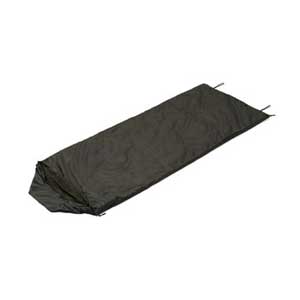
More of a happy medium between a tent and a bivy sack, the Snugpak combines the features of both to form a beast of a bivy bag or a very miniature tent. Let’s start with the drawbacks – it weighs, quite frankly, a heck of a lot! At 39 oz, the Snugpak is comparable to many one-person tents. But don’t be put off just yet! For all those added ounces, you do get something very versatile and unique.
This Bivy Shelter is a gap-bridger between a tent and minimalist bivy bags. It’s very spacious, robust, and tough and offers great weatherproofing and one of the best weather resistance levels on the market.
For those seeking emergency shelter or a lightweight nook for a few summer nights in the outdoors, this may well be overkill. For long-distance trekkers who fancy a bit of space at the end of the day without the weight of a tent, however, it might just be the solution you’re looking for!
All things said, this bivy bag is fairly reasonably priced, very spacious with good all-weather and water resistance, and it has a good amount of craftsmanship behind it. Though it’s pretty heavy, maybe the heaviest bivy sack on the list, its pack size is pretty large, and it isn’t as breathable as some, all of its good features make up for it.
Pros
- The sack is made out of ripstop nylon, which is not only waterproof but also extremely durable, and with its polyester lining, it is still breathable and skin-friendly
- Unlike down sleeping bags, this envelope sleeping bag is easy to roll up into the carrying sack, and it can be compressed down to just 11″ in height and 1.7lbs in weight
- With its removable liner, you can use it in many conditions, and that gives you a whole another level of flexibility
Cons
- While the bag is pretty small and lightweight when folded up, the actual process of folding it up is a two-man job because of how slippery it is
9. LytHarvest Ultralight Bivy Bag Tent
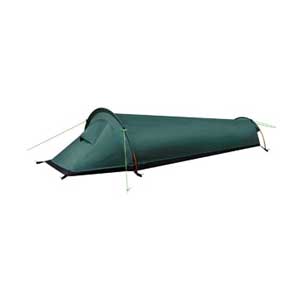
The LytHarvest is only 1.6lbs for the entire kit, is lightweight, convenient to carry, and easy to hold in your backpack. One-pole frame system with shock-corded aluminum pole allows for fast, easy setup and dismantling. Just need 2 min to install, save you time. With the mesh door to allow the air to circulate, Fully Seam Taped + Waterproof Coating + PU5000MM might be able to sustain light to moderate rain, so you will not worry about a rainy day in the field.
And the windows on the top strengthened the airflow 225 x 90 x 50 cm (L x W x H). Suitable for one person, and there is enough room for you to turn over. It is a more comfortable and wonderful sleeping camping experience for you. Perfect for 3 SEASONS of CAMPING and HIKING: Summer, Early Fall, and Late Spring. Suitable for camping, hiking, climbing, self-driving tour, fishing, and other outdoor activities.
Pros
- The back is pretty lightweight, at only 1.6 pounds, and on top of that, with the shock-corded aluminum pole setting it up will be an easy and pain-free process
- While it is made of waterproof nylon and it is coated PU5000MM coating, it has a mesh door that allows a fair amount of air to circulate in and out
- The whole bag is well-padded enough to sleep comfortably and cozy, and there is so much room that you will be able to run freely
Cons
- The flap for ventilation does really allow air in, but actually, it manages to close itself very often, and you may end up waking up gasping for air
- While the bag is very wide, the problem is that it is too short, and if you are anywhere between 5.5 and above, you better skip this one
10. ECOOPRO Warm Weather
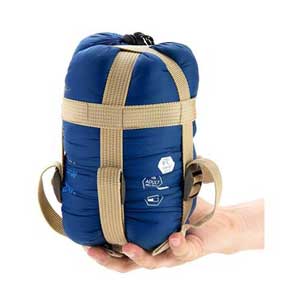
This bivy sack is made out of Ripstop Nylon (Waterproof and Durable), and it is lined with Polyester, which is Breathable and skin-friendly. Premium TC Cotton keeps the temperature low and provides an ultra-comfort sleep environment for people. The sleeping bag is waterproof and weatherproof, and the smooth zip closure makes it more convenient.
The sleeping bag measures 83 “L x 30 “W, which is one of the best sizes in its category, and the size fits most people. It can accommodate an adult or two children. Unlike down sleeping bags, this envelope sleeping bag is easy to roll up into the carrying sack, and it can be compressed down to just 11” in height and 1.7lbs in weight. It’s lightweight and ideal for backpacking enthusiasts.
You can use this warm-weather sleeping bag without a sleeping bag liner in multiple weather conditions. It’s one of the best sleeping bags for everything, from outdoor camping trips to emergencies.
Pros
- This bivy takes the perfect place in the middle of the road between a tent and a bivy sack, thus giving it much more flexibility than most of its competitors
- it’s very spacious, very robust, and tough, and offers great weatherproofing and one of the best weather resistance levels on the market
- Not only is the bivy super feature-rich, but it manages to keep its price on a lower level than most similar products without cutting corners
Cons
- There is a huge manufacturing error that occurs to most customers in the seam on the bottom of the bag, and even with a gentle pull, it will rip apart
- The sack on the overall is a little bit too heavy, and while, at first, the mosquito net looks very practical and useful, it is uncomfortable and doesn’t do much
How To Choose A Bivy Sack?
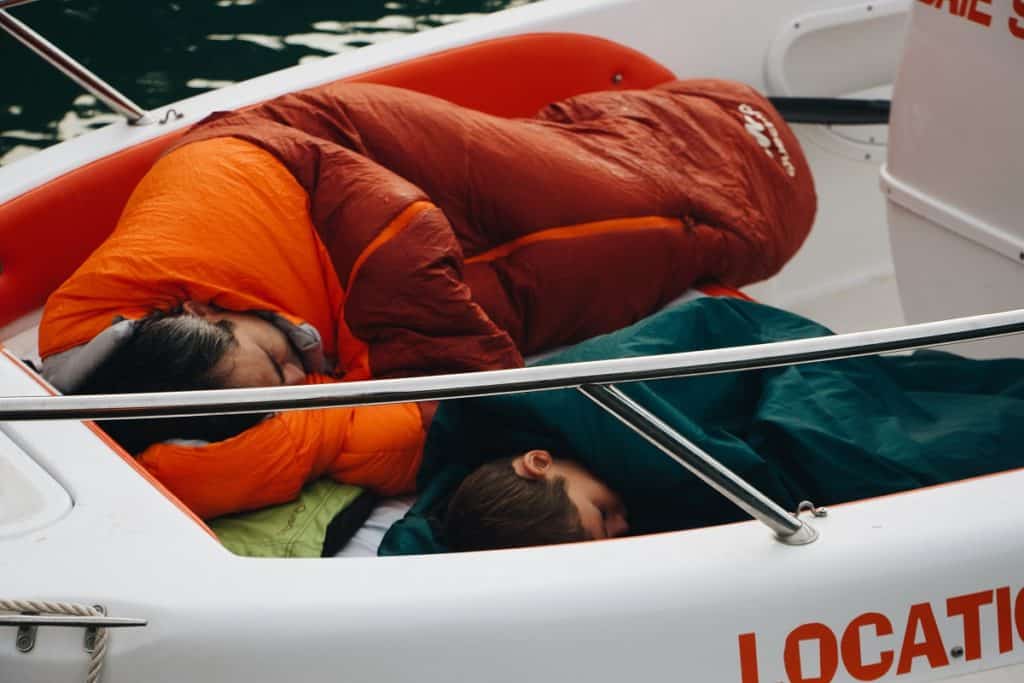
Having to choose the right bivy sack that has enough space for your sleeping pad while not having too much weight behind it and being structurally stable is a hard combination to be achieved. However, it is a crucial part of your bushcraft equipment and a must-have item in your arsenal.
The list mentioned above has objectively one of the best bivy sacks on the market, but you may want to choose another one to be prepared and to understand the reviews above better, I’m going to list all of the factors that carry the weight of making not only a great but the best bivy sack model for you.
Decide On The 3 Main Types of Bivys
There are three main types of bivy sacks-traditional sacks, face lifters, and bug nets. They all share a similar “slip over your bag” design, but they differ in weight, comfort, purpose, and material.
Sacks
Traditional sackcloths fit over your sleeping bag from head to toe. There’s a flap at your head with a zipper that you can leave open on a warm, dry night. Or, when the weather is nasty close, it shuts. You’re completely sealed into the bivy sack when you close that flap, much like a coffin. You definitely have to leave a small opening in the zipper so that you can let a little bit of fresh air into the bivy sack and allow your breathing out to condense.
Face-Lifters:
Facelifts enclose your sleeping bag like a traditional bivy sack, but for comfort, these bags have a hoop at the head. This greatly reduces the coffin-like feel of a bivy sack while maintaining the benefits of weight and size. The hoop gives you room to read or check your phone before you crash into the evening.
Bug Nets
All you need sometimes is a simple bug net to keep the insects at bay while you’re sleeping. These net bug bivy bags enclose your Bivy bag in a fine mesh fabric that won’t let through even the smallest no-see-um. These bug nets often have a hoop or a pole in the head area so you won’t get bit through the fabric.
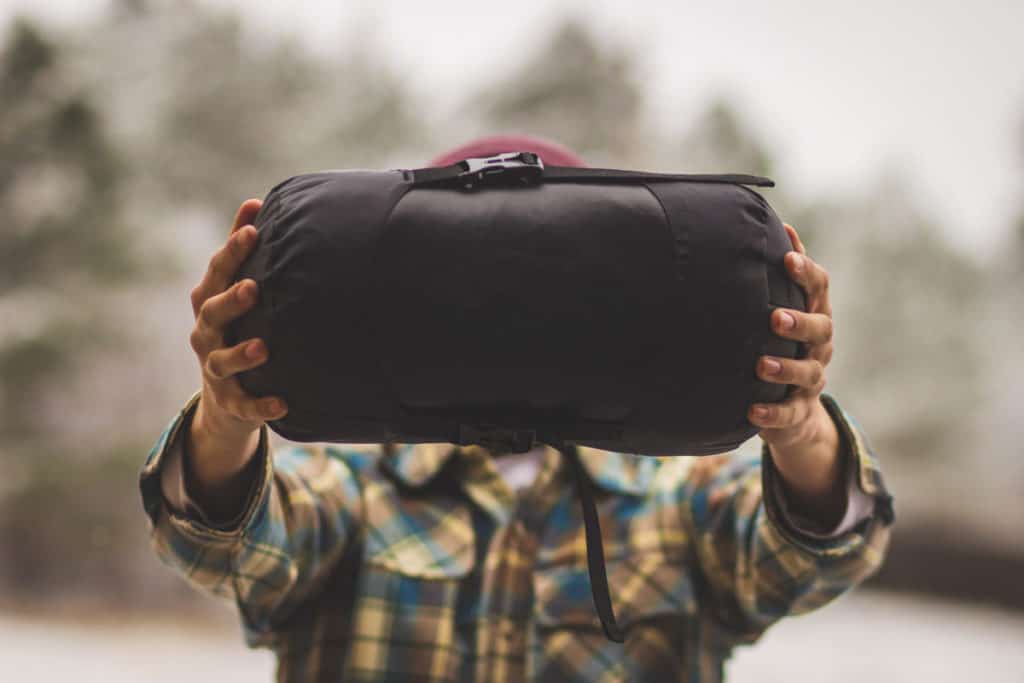
Size and Weight
While reducing size and weight is something manufacturers focus on when designing a bivy bag, it still needs to have enough room for you when it’s time to sleep. When talking about dimensions, there are two things you should think about – how large the sack is when you open it and how small it is when packed.
As you had the opportunity to see, most bivies range between 80 and 90 inches in length, with some being even longer. If you are a tall person, you should go for a longer bivy – otherwise, you might not be able to zip it up properly.
Width also varies from product to product, and it’s different in the shoulder and foot area. Length, width, and also height greatly influence the comfort you’ll be feeling inside. Some people feel a bit claustrophobic when they use a bivy bag, so it may take some time to get used to. You should also be aware that most products won’t allow you to fit your gear inside, so you may consider getting a waterproof backpack.
Some products come with poles, and some don’t. Poles are attached like hoops that pitch the material and form a canopy over you. This gives you significantly more headspace and reduces the feeling of unrest we mentioned because the fabric doesn’t sit on your face when you zip the bag.
When packed, it should take as little space as possible. All the products we listed are very small and lightweight when compressed, but there are still differences between them. If your bivy comes with poles, stakes, or heavier materials, for example, you can count on it being bulkier. It all depends on your need and what you are willing to sacrifice to get the smallest package possible.
In addition to the compact package, you also shouldn’t feel the weight of the bag on a long hike. Weight usually ranges from as little as 1 pound to just a bit over 3 pounds. This is somewhat the top limit it’s allowed to have – if the bivy exceeds the weight by much, you might as well consider getting a backpacking tent.
Like size, weight also depends on the accessories and features which come with the sack. If you decide to cut down on weight, ensure you don’t eliminate anything you may need when outside because lightweight bivy bags aren’t always the best ones.
Pole
Bivies come in many shapes and sizes, as already mentioned. They are essential, in some cases, a sheet of waterproof material that gets wrapped around your bag so you won’t worry about any rain getting in. On the other hand, under cold weather and harsher conditions, less minimalist designs create more of a cocoon to camp.
The latter type of bivy sack frequently uses a pole or hoop structure, creating a mini tent-like atmosphere within the sack. They give you more storage space and room to move around and the ability to shed water and snow easily.
The downside? They aren’t as lightweight, and they are also more expensive as well.
This decision depends on what you plan to use your bivy sack for. If you’re looking for a more permanent tent alternative, you may want to go for something with a pole structure. But if you want a bivy for quick, infrequent trips, a poleless one will probably serve you just fine.
Pack size
Hikers and mountaineers always strive to have equipment that packs small as it allows them to pack their backpacks more efficiently. In this selection, we only included bivy sacks with small pack sizes.
Material
All bivy sacks in these reviews are made of waterproof breathing fabrics such as Gore-Tex Respiration Positive Fabric, eVent, and Pertex Shield (these fabrics are also used for rain jackets) or normal ripstop nylon. Waterproof and breathable fabrics differ in weather resistance, breathability, and durability.
3-layer fabrics (consisting of the face fabric, membrane, and inner fabric) are very durable and offer great breathability and rain and snow resistance. Thus, bivy sacks made of 3-layer waterproof and breathable fabrics offer a superb performance but are also quite expensive.
2.5-layer fabrics ( material consists of the face fabric, coating or membrane, and a non-fabric inner layer) are extremely light and offer decent breathability and rain resistance. Bivy sacks made of 2.5-layer waterproof breathing fabrics are very light, but they might occasionally have a buildup of condensation due to the mediocre breathability of the fabric. Ventilation holes/panels might be used to minimize condensation issues.
Due to thicker individual layers, 2-layer fabrics (consisting of a face fabric and coating or a membrane) are heavier. Compared with 2,5- and 3-layer waterproof breathing fabrics, they offer inferior breathability and weather resistance. Bivy bags made of 2-layer fabrics are usually used only as an emergency shelter.
That’s why we didn’t include any in these reviews. Occasionally, they are equipped with ventilation holes to mitigate the problems of condensation that may appear because of the fabric’s poor breathability. They are also very lightweight, but they do not have many additional features and more minimalist designs.
No matter the number of layers used, any fabric used in portable shelters should be treated with DWR (sustainable water repellant) to repel the water instead of absorbing it. The floors are usually made of ripstop nylon coated with polyurethane for better durability and water resistance.
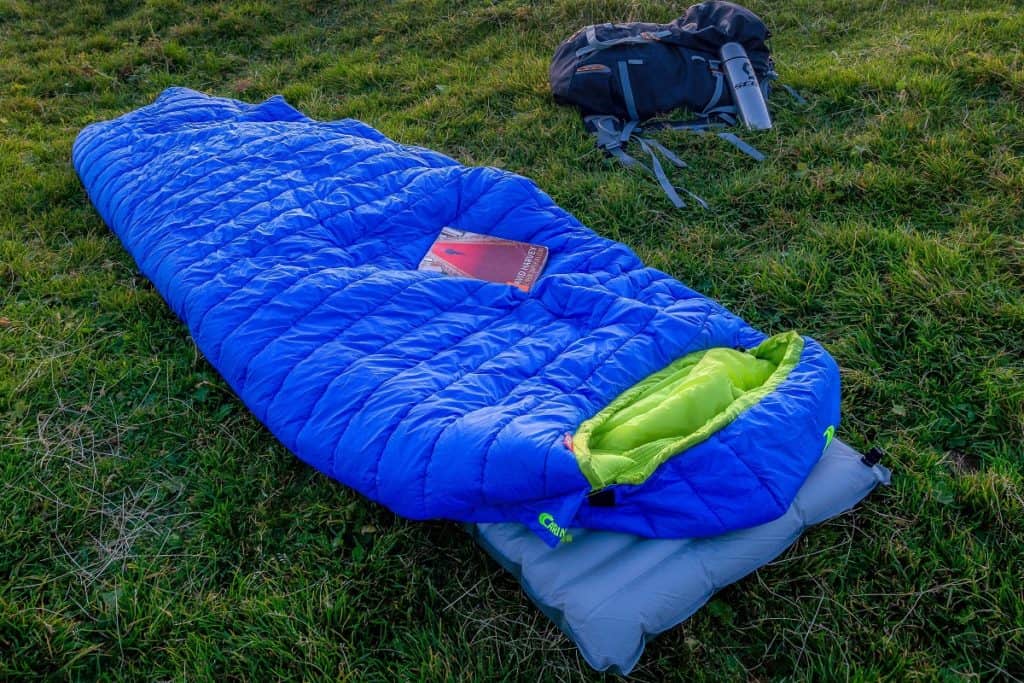
Warmth
Bivy sacks can help keep you warm by retaining your body heat inside. The efficiency in this department varies from product to product, mostly depending on the type of material used. You should check what the other users had to say about this to get a clearer picture of what you can expect, especially if you plan to use it in the snow. Also, consider combining it with a winter bag or at least bring a blanket for additional warmth.
Comfort
Even though this is not the main focus point of bivy sacks, you still need to get a good rest when you use them. Several factors contribute to this, and bivy sacks are improving. As we mentioned earlier, check that your new product has sufficient length and width for your body frame and is lightweight. It greatly helps if you have some space above your body too. The design can make your user experience better – whether you can set it up quickly and if you can easily get in and out of the sack. Finally, waterproofing and breathability are key components of your comfort inside because it’s not very fun to wake up wet and sweaty.
Weather Protection and Condensation Resistance
The weather and condensation resistance of a shelter greatly depends on the fabric. Unfortunately, the two qualities are mutually exclusive to some extent. The higher the breathability of the fabric, the better the condensation resistance, as it allows moisture and warm air to escape to the outside.
However, there is no such thing as a highly breathable fabric that is also completely waterproof. Therefore, manufacturers must find the right ratio between breathability (condensation resistance) and weather resistance to achieve the best functionality.
In general, bivy sacks offer inferior rain and condensation resistance in comparison to double-wall tents (which are equipped with a completely waterproof fly that comes over a breathable canopy), but on the other hand, they are also faster to set up and much lighter. We do not recommend using a bivy sack (or indeed a single-wall tent) in areas that are known for continuous heavy rain.
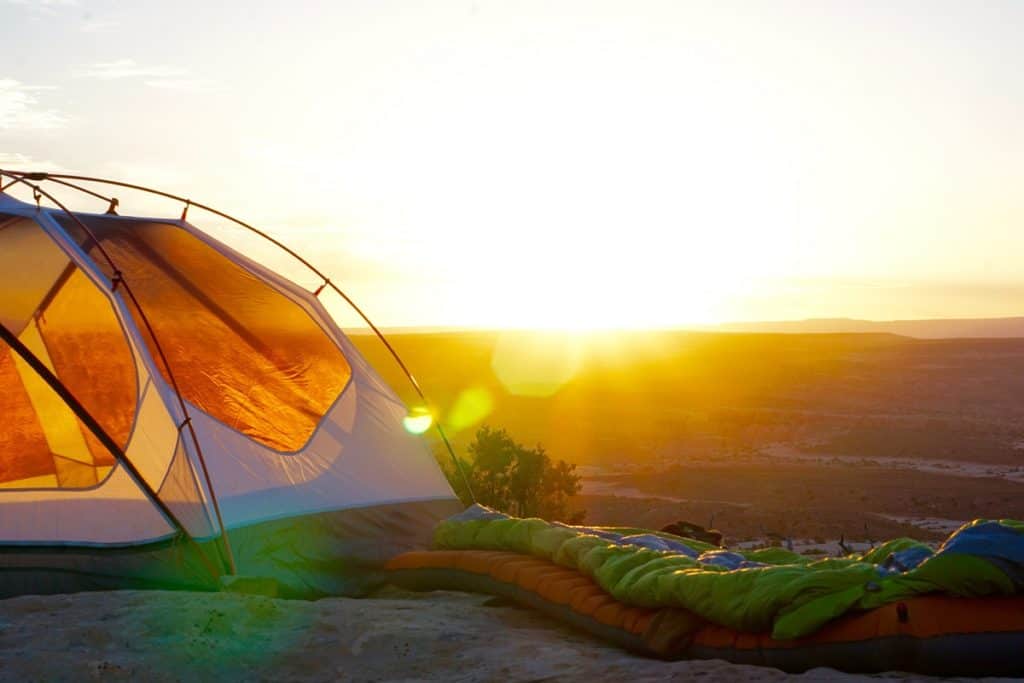
Breathability
This is often pointed out as one of the weak points of bivy sacks. Waterproof materials aren’t very breathable, becoming even more obvious with bivies. The air can’t circulate, and you might encounter a condensation problem. Droplets of water form on the inner side of your bivy because the vapor has nowhere to go.
For this reason, try to look for products with mesh panels or special vents that improve circulation and eliminate this problem. If you choose to get a bivy made of Gore-Tex or something similar to a Pertex Shield, it will greatly increase your comfort in this area.
Intended Use
Most bivy sacks are waterproof, but you won’t be able to use each of them in every circumstance. Some are designed for warm weather and insect protection, while you can also get a 3 or 4-season bivy tent if you plan year-round adventures. You need to think about how long you’ll be staying outside and the general weather conditions you’re expecting.
Bivy sacks are the best choice for an overnight stay or even a couple of nights, but if you plan a prolonged stay, you should consider a larger and more comfortable solution, like a 4-season tent, for example. Also, some bivy sacks will be more comfortable in warmer months, while others will keep you nice and cozy in cold weather but make you sweat when it’s warm. Weigh the options and make a choice that suits your hiking and backpacking style.
Additional features
Perhaps one of the best extra features your bivy can have is a mesh panel (or a complete mesh inner layer). This gives your bivy bug protection when you want to unzip or remove the rainfly while enabling free air circulation and light. You should look for a sack with features similar to this one because nobody enjoys mosquitos buzzing and bugs crawling over you.
Besides, some products have extra features like vents that function even when the fly is completely zipped. Some manufacturers include stakes and guylines, which you can use to stabilize your shelter properly. Finally, some features are added to improve your comfort, like small mesh pockets or straps to keep your sleeping pad in place.
Frequently Asked Questions
What Is A Bivy Sack?
A bivy sack is a shelter for one person in which you sleep and serves as a more compact and lightweight backpacking alternative to a tent. You can easily take it anywhere, and you’ll always have something to keep you dry and warm at night.
Why Should I Use A Bivy Sack Instead Of A Tent?
This is a great choice if you need something to sleep in but want to save backpacking space and cut weight when packing. It’s much lighter and smaller than any tent out there. It’s also a good emergency shelter you can set up quickly, faster than most tents. Keep in mind that because of the size, it isn’t very useful for hanging out inside like you would do in a tent.
How Do I Prevent Condensation In My Bivy Sack?
When we discussed breathability, you can have less condensation inside if you choose a sack with good design and material choice. Make sure your new bivy has mesh panels, and unless there is heavy rain, you should leave the zipper open so the vapor can escape instead of making condensation inside. As we said, dedicated vents can help reduce condensation.
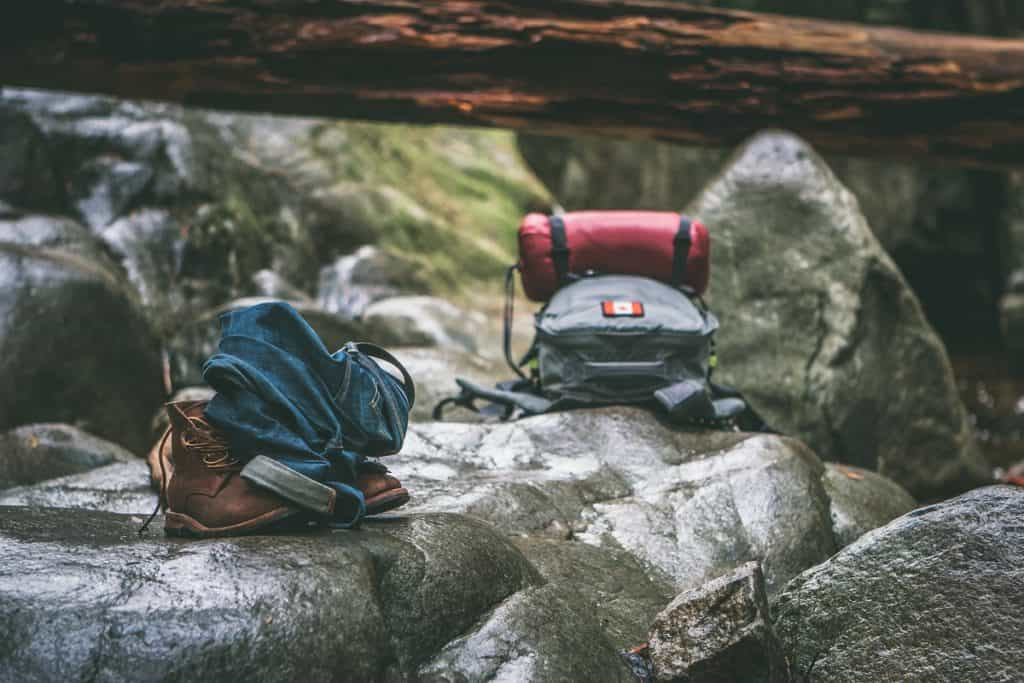
How Do I Wash My Bivy Sack?
There will come a time when you need to clean your sack before the next use. Luckily, most bivy sacks can be washed in a machine, but you should always check the label or instructions. Whether you wash it in a machine or by hand, always rinse it off properly. Some can go in a tumble dryer, while others should be left to air dry. Make sure it’s completely dry before packing it. Otherwise, you may risk mold or weird smells.
Final Words
The best bivy sacks are the ones that you can feel comfortable in, the ones that have the best and most comfortable sleeping pad, the ones that have the best breathability, and the ones that aren’t too keen on the whole weight thing.
But all of that is irrelevant at the end of the day because you can compare statistics and all sorts of numbers and marketing slogans and technical jargon, and yet the best bivy sack will be the one that you can relax and feel comfortable in. All other things aren’t that important.
